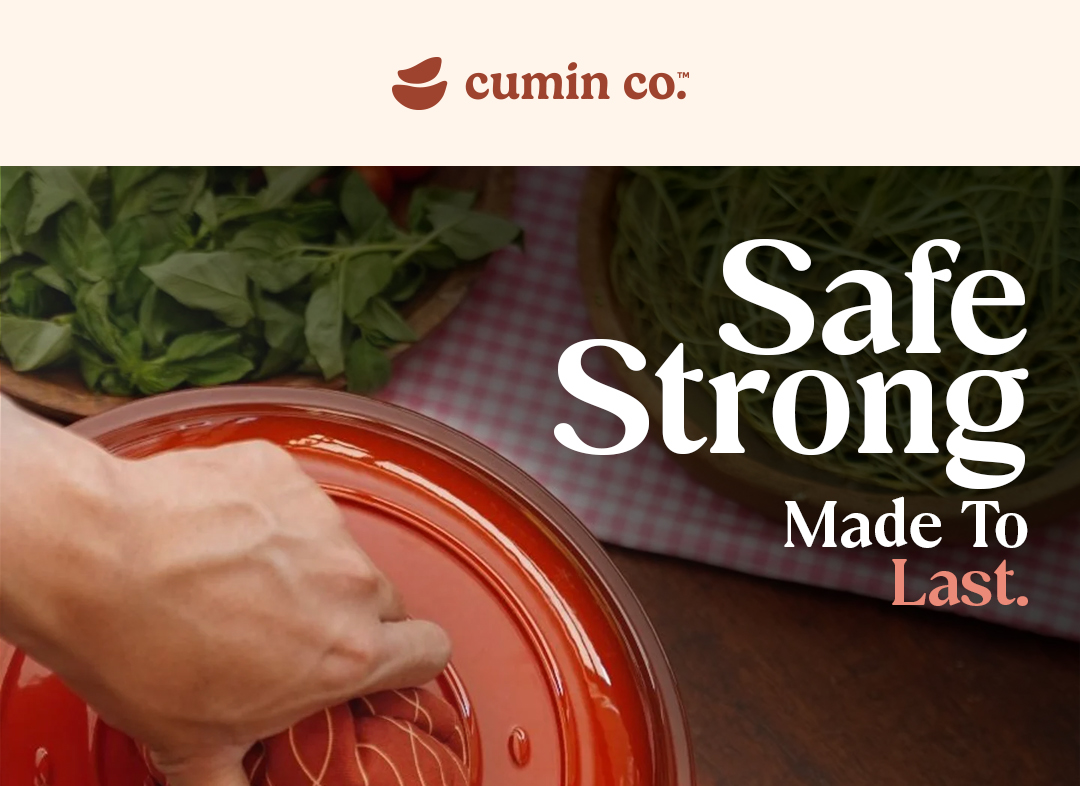The Dutch Oven Revolution in Indian Kitchens
For years, Dutch ovens were seen as tools for Western recipes like stews and sourdough. But 2025 has changed that. In modern Indian kitchens, the enamel cast iron Dutch oven is no longer an imported curiosity; it's becoming the go-to cookware for health-conscious, experimental cooks.
Its secret? A rare blend of durability, heat retention, and toxin-free cooking, wrapped in elegant enamel. And while most people know about its use in slow-cooking, few realize how versatile this single pot really is.
Let’s explore 5 surprising ways it’s transforming Indian cooking.
1. Baking: Perfecting Breads and Desserts
Gone are the days when baking was reserved for ovens or bread machines. The enamel cast iron Dutch oven creates the ideal micro-environment for baking.
- Sourdough Breads: Thick walls lock in moisture, giving homemade loaves a bakery-style crust and soft interior.
- Halwa and Barfis: Even heat prevents sticking or burning, perfect for slow-cooked desserts.
- Cakes: Yes, you can bake soft, spongy cakes on the stovetop or in the oven with this pot.
For home bakers without large ovens, this cookware is a game-changer.
2. Braising: Flavour-Packed Curries and Meats
Cooking food slowly in liquid has been part of Indian cuisine for centuries. Think:
- Kormas simmered with rich gravies
- Mutton Rogan Josh slow-cooked to perfection
- Vegetable Ishtu with coconut milk
The Dutch oven’s tight-fitting lid traps steam and circulates flavors, ensuring tender, aromatic dishes. Its enamel coating also prevents reactions with acidic ingredients like tomatoes or tamarind.
3. Warming: Keeping Rotis and Dosas Fresh
Most cookware loses heat quickly, but the Dutch oven excels at heat retention. It’s surprisingly effective for:
- Keeping rotis and parathas soft for hours without drying them out.
- Keeping dosas and appams warm during family meals.
Its aesthetic design means you can serve directly from stove to table without compromising presentation.
4. Deep Frying: Healthier, Cleaner Frying
Did you know a Dutch oven can double as a kadhai?
- Frying pakoras, samosas, and vadas is safer due to its deep sides and even heat distribution.
- The enamel prevents oil stains and makes post-cooking cleanup easy.
Unlike thin aluminum kadais, the Dutch oven maintains oil temperature better, ensuring crispier, less oily snacks.
5. Slow Cooking: From Dum Biryani to Payasam
Indian recipes that require hours of slow cooking like Hyderabadi biryani or Kerala-style payasam find their ideal partner in the Dutch oven.
The pot mimics the “dum” technique perfectly, letting flavors develop while keeping the food moist and tender.
Why Enamel Cast Iron Is Winning Indian Hearts
- 100% Toxin Free Cooking: Free of PTFE, PFOA, and heavy metals.
- All-Cooktop Friendly: Works on gas, induction, and oven.
- Eco-Friendly: Made from recycled materials.
- Elegant Serveware: Comes in vibrant colors like Forest Green and Rust.
Caring for Your Dutch Oven
- Use wooden or silicone utensils to preserve the enamel.
- Avoid sudden temperature changes to prevent cracking.
- Hand-wash with mild soap and a soft sponge for longevity.
Final Thoughts
The enamel cast iron Dutch oven isn’t just another pot — it’s a multi-functional tool that bridges tradition and modernity. Whether you’re baking a cake, frying pakoras, or serving dum biryani, it adapts to your needs effortlessly.
For Indian kitchens seeking healthy, toxin-free cookware that performs across cuisines and techniques, this is the ultimate upgrade.







